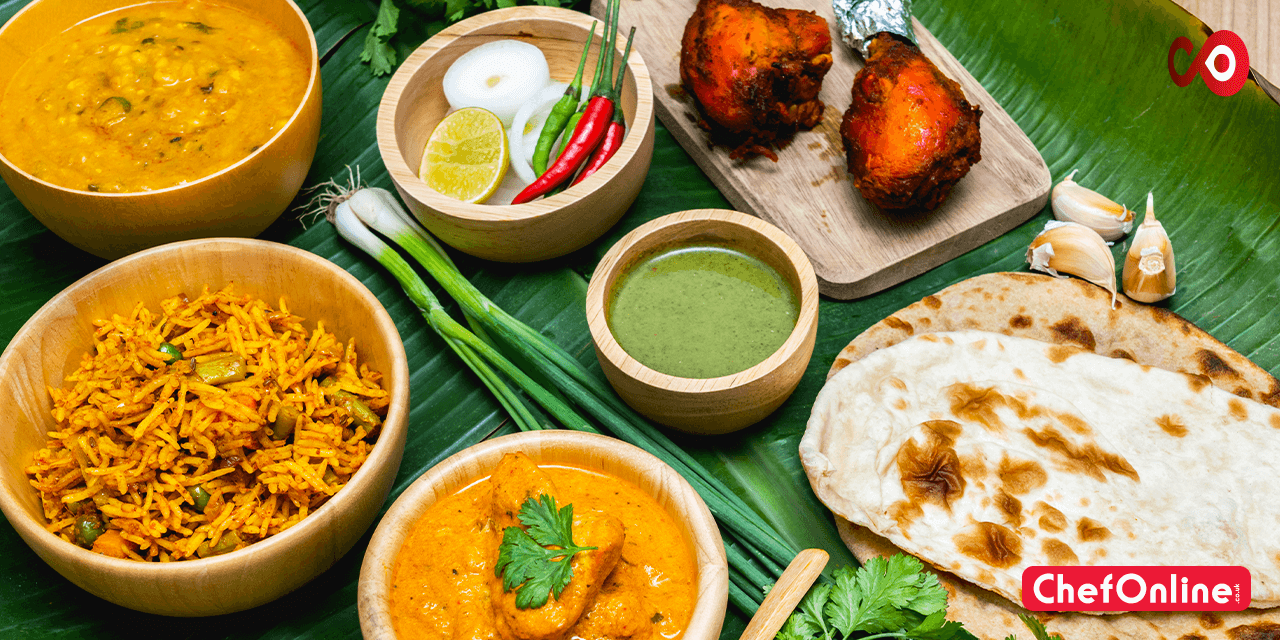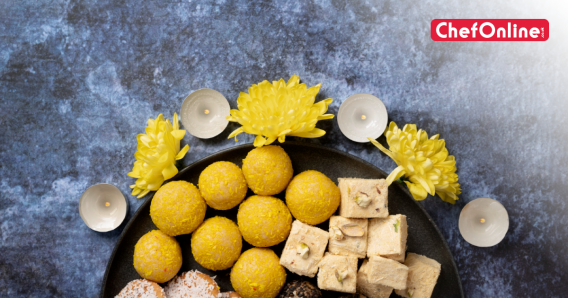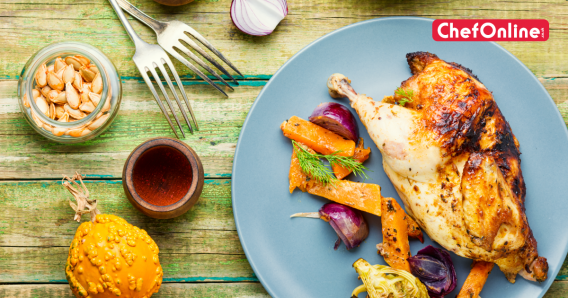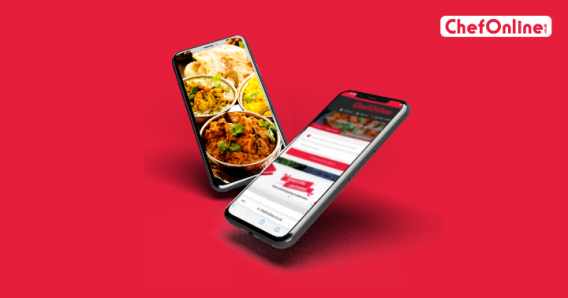Nowadays, you can’t walk down a high street without encountering at least one Indian restaurant, and most Brits will have a go-to order that flies off their tongue.
As one of the most popular takeaways in the UK, there’s a social stigma forming - where food fanatics believe that anyone who hasn’t tried popular Indian food is uncultured. This is an unfair label, and simply not the case.
Indian food for beginners can be incredibly confusing for a variety of reasons - including the wide array of options varying from rich and spicy curries to tasty Indian desserts. It's enough to put anyone off.
Instead of continuing to feel deterred by unfamiliar Indian food descriptions or avoiding social plans at local Indian restaurants, this guide aims to answer all your burning questions:
- What Indian food should I try?
- What to order at an Indian restaurant?
- What Indian food should I try if I don’t like spice?
What Makes Indian Food Unique?
When looking at Indian food for beginners, it’s easy to focus on the emotions you are feeling as you prepare to step out of your comfort zone. Instead, you need to look at the bigger picture: people love Indian food for a reason. Every dish guarantees a flavourful adventure, and the differences in regional cuisines mean that there is always something new to try.
Is Indian Food Spicy?
Indian food can make your mouth feel like it’s on fire if you are not careful, but the use of both gentle and hotter spices creates a variety of options to suit your tastes.
If you tend to avoid chilli peppers like jalapenos in other cuisines, then there’s no reason why you can’t do the same with Indian food. For beginners, it’s okay to try different things until you find what you like… though you may want to keep some milk handy.
When deciding what to order at Indian restaurants, familiarise yourself with the names of popular non-spicy dishes like Butter Chicken, or look for symbols on the menu that indicate heat levels.
When in doubt, you can always have Indian desserts for dinner!
How to Read An Indian Food Menu
Not recognising anything on the menu might have you wondering what to order at Indian restaurants - but don’t worry, there are some tricks to finding a dish you’ll like (but it does involve some studying). First, read up on what is Indian food - and then prepare yourself for what to expect below:
Basic Terms
Memorising the basic terms in Indian food descriptions will take you away from learning about Indian food for beginners and move you to the next level. Here is a couple that you’ll need to know:
- Bhuna means to “stir fry”, and usually hints at a drier Indian meal that would traditionally be eaten by hand with no cutlery.
- Dum means to “steam”, and is typically a phrase used to refer to a variety of sweeter Indian dishes. Prepared much like Chinese dumplings, Bhapa Doi is one delicious example of a pudding steamed to perfection.
Sides, Sauces, and Main Meals
It can be frustrating to eat the same dish or side over and over again, but why ruin what works?
Knowing the name of one meal that you grabbed from an Indian food for beginners guide will allow you to scan through the menu until you find it. For sweet and sour lovers, we recommend Dhansak - a spicy Indian sauce that is typically served with pineapple rings.
Common Ingredients & Spices
Thankfully, ingredients in Indian meals are commonly replicated across different dishes - but first you need to recognise them. Once you get a taste of what you like, you’ll be able to figure out what Indian food you should try next.
- Aloo is the Indian word for potatoes and can be a safe option for anyone uncertain of what to order at an Indian restaurant.
- Chana is the word for chickpea, and can often help vegetarians identify meat-free Indian dishes to try.
- Korma is a word you’ve likely already heard of and refers to a yoghurt based curry sauce made of cumin, garlic, coriander, ginger, chilli powder, and turmeric - and is a great Indian food for beginners.
Frequently used Indian spices you already love include garlic, coriander and ginger - but others you’ll need to try are:
- Turmeric
- Cumin
- Cardamom
- Cilantro
- Garam Masala
Which Indian Dishes Are Best for Beginners?
Ordering Indian food at a restaurant isn’t as simple as picking a curry and calling it a day, there’s actually a whole range of top Indian dishes to try.
Indian Appetizers
Corn Pakora
A corn pakora is a delightful, crispy fritter made with chickpea and rice flour - often flavoured with ginger and garlic. It is a light addition to any main meal and can be a tasty snack to dip into any curry sauce.
Samosas
Even if you are only just starting to learn about Indian food for beginners, samosas are a household name: a pastry appetiser filled with vegetables, meat and spices. Available frozen from most grocery stores, you can always try a batch before you order the traditional version from an Indian restaurant.
Vegetable Kebabs
Loaded with nutrients, vegetable kebabs are a tasty option for a healthy appetiser that isn’t too filling. It combines what you don’t know with what you do - using a range of British and Indian grown plants.
Indian Main Courses
Chicken Tikka Masala
A creamy smooth curry, Chicken Tikka Masala is a famous recipe that has recently been adapted for British tastebuds. It incorporates yoghurt and tomato to create a gentle, warming meal that tastes fantastic served on plain rice.
Jalfrezi
Made for spice-lovers, Jalfrezi is a hot meal of meats and peppers - much akin to a Mexican fajita, making it a great Indian food for beginners. It’s commonly made with cumin and coriander.
Dal Makhani
For a vegetarian who wants to avoid spice, Dal Makhani is a brilliant name to remember - it’s buttered black lentils that will remind you of the Indian version of a kidney-bean stew.
Lamb Vindaloo
Well-known for its acidic taste, Lamb Vindaloo is highly spicy and incredibly addictive. The burn rushes down your throat, creating an intense kick that sets your heart racing.
Saag Paneer
A leaf-based dish, Saag Paneer is often one part of a greater whole: complementing side dishes and appetisers nicely. It’s a great vegetarian option for anyone looking to reduce their meat consumption and is regularly eaten with rice or bread.
Indian Side Dishes
Biryani
If you’re looking for a lighter Indian food for beginners, the side dish, Biryani is spiced rice usually packed with either meat or eggs. It makes the perfect addition to most main meal options and is frequently spotted at Indian buffets.
Naan
You can’t go wrong with fried bread, and naan is no exception. Sometimes coated in delicious garlic butter, naan bread is an easy Indian side dish to add to the list.
What Indian Food to Order for Kids
Children will often have a low-spice tolerance, making finding suitable Indian food tricky.
To create a filling and healthy meal, try combining Indian food for beginners like spiced corn fritters with family favourites such as naan bread. Then, you can slowly introduce a wider range of dishes - encouraging them to try the curries or other meals you order.
If all else fails, tandoori chicken is a relatively plain Indian food option that can be enjoyed by most.
A Beginner's Guide to Ordering Indian Food
Before asking yourself what to order at an Indian restaurant: be brave. Ask your server.
They’ll be happy to help guide you towards beloved Indian dishes and you’ll get to see them express their passions as they describe favourites to you.
Step 1: Be Honest About Your Spice Tolerance
There’s no point trying to protect your ego for the sake of looking tough, so, if you have a low spice tolerance - be honest. You’ll enjoy your food more when it arrives, and won’t have an upset stomach afterwards. When asking “what Indian food should I try?” speak openly to your server about what you think you can handle and see if they can adapt dishes to have less of a kick.
Step 2: Order Side Dishes and Drinks to Compliment Your Main Dish
It might be overwhelming enough to simply find one meal to order, but use what you’ve learnt from our Indian food for beginners guide to pick some side dishes and drinks that will enhance your main dish. That way, you can always eat more of one thing and less of another if something doesn’t taste how you imagined.
Step 3: Eat Family Style
A buffet in the middle of the table is an incredible way to enjoy Indian food at its best - scooping new meals onto your plate as you try out a range of different dishes. You never know, you might find something to fall in love with.
Step 4: Order Enough Bread and Rice
If you’re still unsure what to order at Indian restaurants, just add more bread and rice to the order. They make cheap additions to any order and will ensure there is enough food to go around.
Don’t like the curry you ordered? Not to worry! There’s plenty of other food for you to enjoy.
Step 5: Try the Restaurant's Specialty
Take a risk with your decision: express your likes and dislikes, and then leave it up to the server, or choose the restaurant specialty.
Every chef will have a meal they absolutely love to make, and they’ve chosen to feature it for a reason. Maybe they’ve put an interesting twist on a classic dish, and you’ll soon be drooling and gushing over the delightful food you’ve been served.
Step 6: Do Your Research for a Good Restaurant Before You Go Out
Instead of leaving things up to chance, ensure the health and safety of your loved ones by searching for a restaurant before you go out. There’s a whole host of information out there, including this article for the best Indian takeaways.
Plus, no one wants to be caught in the mid-evening rush desperately trying to calm hungry little ones after you’ve been told there’s an hour wait.
Through ChefOnline, whenever the need arises, you can browse top-rated, tasty cuisines in your area - allowing you to easily research Indian food for beginners and book ahead.
Sign up to our website or app today and find your next evening meal.






